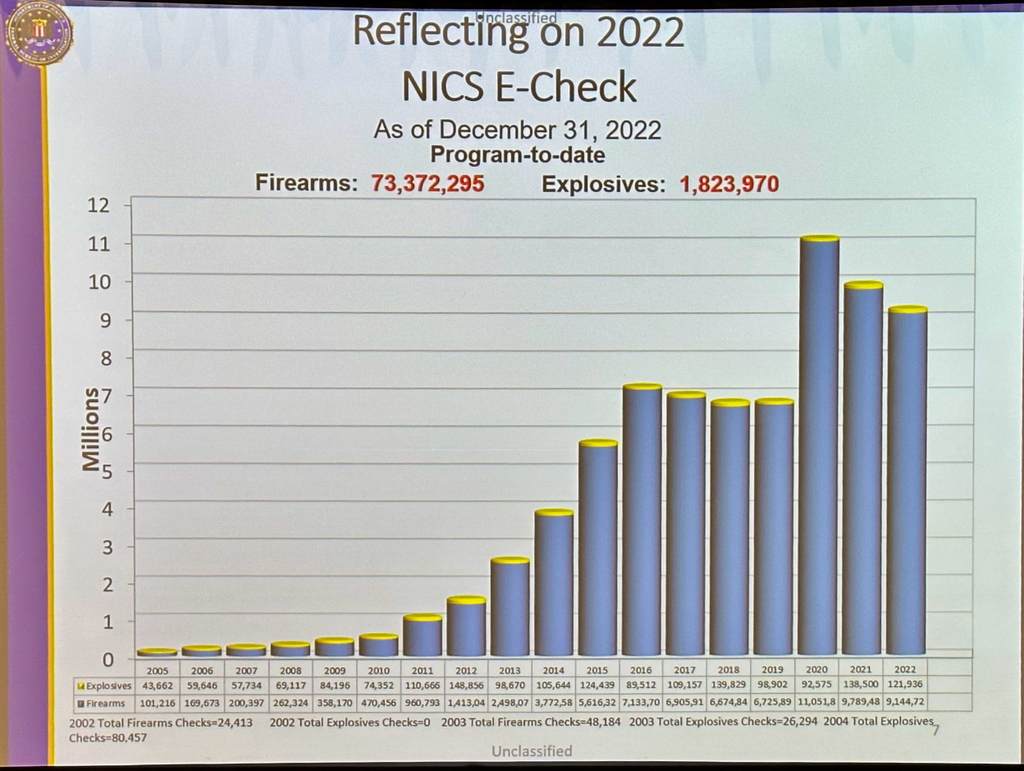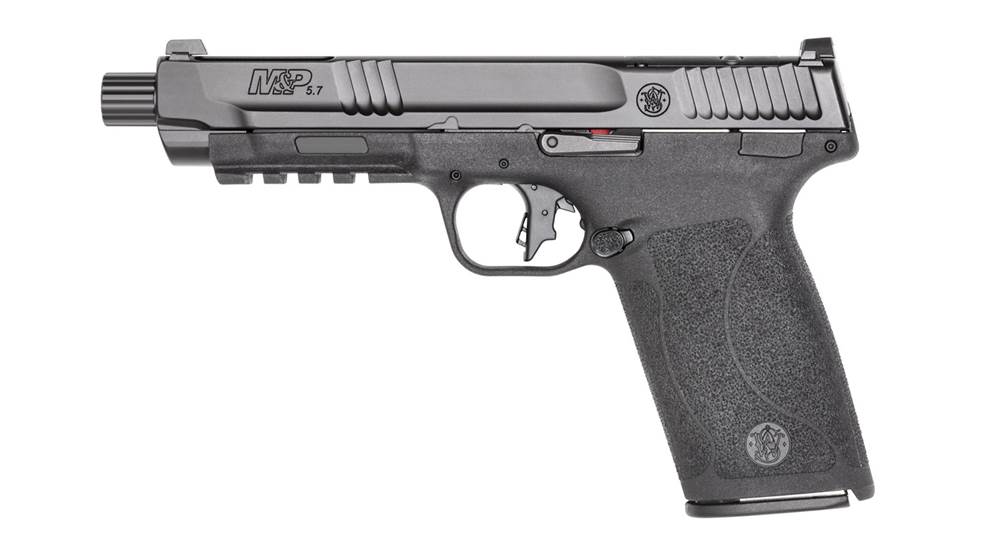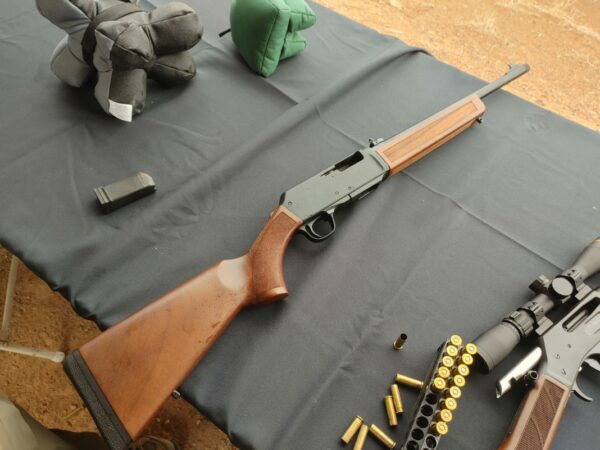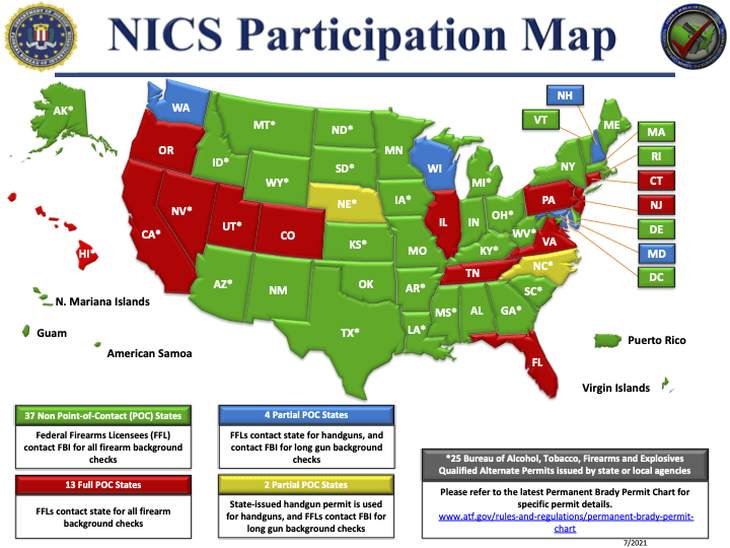GOA Motion for Preliminary Injunction Against the ATF Concerning the Pistol Brace Rule
Plaintiffs Motion for Preliminary Injunction File StampedCategory: Gun Schtuff
I prefer RRLP (Reduced Ricochet Limited Penetration) frangible that the Navy developed for boarding operations -extra unplanned holes in the hulls of ships being a bad thing – for inside the house. Otherwise, I use Blackhills 70 grain TSX. Your choice may be different.
The Best 5.56 Ammo for Home Defense
If you’re looking for the best 5.56 NATO ammo on the market, then you’ve come to the right place! With so many different varieties of 5.56 ammo available from multiple retailers, it can be hard to know what’s best for home defense.
In this article, we are going to share with you our top 5 picks for the best 5.56 NATO home defense ammo available right now.
If you simply cannot wait, the best 5.56 ammo for home defense AR-15 rifle is Black Hills 62 gr Dual Purpose. But if you want to see the full list just keep scrolling and we’ll cover all our choices and explain why we picked them.
If you’re new to the 5.56x45mm NATO round, make sure to check out the Buyers Guide by clicking HERE.
Now let’s get to our top 5 picks for the best types of ammo for your 5.56 rifle…
Since the Federal Register published the ATF’s final rule to restrict stabilizing pistol braces on January 31, dozens of states as well as many private organizations have launched legal battles against the ATF, claiming that the new rule is unconstitutional. Luckily, the recent overturn of the “bump stock ban” sets a strong legal precedent to quickly overturn the new stabilizing brace restriction.
A pistol brace is an accessory that was originally designed to facilitate for disabled veterans the ability to effectively operate a pistol with one hand. According to the ATF’s final rule, the additional surface area provided by a stabilizing pistol brace now classifies these firearms as a short-barreled rifle (SBR), which requires them to be registered and for new purchases to face a long waiting period and additional tax under the National Firearms Act (NFA). This arbitrary policy shift infringes upon the rights of law-abiding citizens by reclassifying an accessory that had been previously legal and unrestricted.
With the creation of the new rule, the ATF essentially usurped the power to create a new law that deviates from existing law and precedent. If left unchecked, this regulation sets a dangerous precedent that could develop into many or all federal agencies ruling through bureaucratic mandates with little regard for the Constitution, congressional authority, and legal due process.
A similar executive ruling — the “bump stock ban” — was overturned in January 2023 by the 5th Circuit Court of Appeals, which concluded that the administrative fiat used by the ATF under the Trump administration circumvented Congress and did not follow the legal procedures to become a law. The same style of administrative fiat was used to tighten regulations on stabilizing pistol braces. The overturn of the bump stock ban may open the door for legal precedent to shoot down the new pistol brace rule.
A group of disabled veterans represented by the Wisconsin Institute For Law & Liberty (WILL) filed a lawsuit against the ATF on the grounds that the new rule violates the Second Amendment and the separation of powers, which prohibit agencies from creating laws through bureaucratic fiat in a process lacking congressional authorization and oversight. The lawsuit also claims that each plaintiff utilizes stabilizing braces as a necessity to exercise his 2nd Amendment rights due to his disability.
The National Rifle Association-Institute for Legislative Action, in conjunction with a coalition of 25 states and many other organizations, launched its lawsuit on February 9, against the Biden Administration’s ATF, arguing that the ATF’s “pistol brace ban” is an egregious overstep of its authority and a gross misuse of executive fiat. According to the ATF website, the ATF’s role in firearms is to “enforce the federal firearms laws,” but this does not give the agency authority to rewrite them. This is a clear abuse of power by the ATF.
While these lawsuits are pending, Republicans in Washington are doing everything they can to reverse not only this ruling, but past overreach by the ATF as well. Senators Marshall (R-Kan.) and Kennedy (R-La.) have formally introduced the “Stop Harassing Owners of Rifles Today” Act, or SHORT Act for short. This bill aims to remove some short-barreled rifles, shotguns, and other weapons from the daunting grasp of the NFA. Notably, this bill would also require the ATF to destroy any records related to registration, transfer, or manufacture of firearms removed from the NFA by the bill.
The SHORT Act adds supplementary pressure to the arguments surrounding the new rule on pistol braces. For advocates of freedom, the ideal outcome would be the overturn of the pistol brace rule and the SHORT Act becoming law. This would remove immediate threats to Second Amendment rights, and the destruction of registration records would put many at ease over fear of future confiscation and outlawing of NFA firearms.
The ATF’s pistol brace ban illegally redefined federal firearms law through a usurpation of congressional authority, and subsequently infringes upon the rights of disabled individuals as well as the millions of firearms owners who legally purchased their firearms and pistol brace accessories. The ban should be immediately overturned.
I can’t comment on any of the rest of the gear here, but I can tell you that the Geissele trigger is a major improvement.
Communism only made one thing that works, and capitalism can make it even better. Amp up your AK with these exciting accessories.

A. Beyond having an injection-molded polymer exterior for superior ergonomics over traditional AK forearm shortcomings, the Magpul Zhukov Hand Guard–AK47/AK74 includes a full-length aluminum chassis for strength, rigidity and welcome heat dispersion. M-Lok attachment slots for rails, grips or light mounts are located at the three-, six- and 12-o’clock positions in a manner similar to AR-15 handguards. MSRP: $109.95; magpul.com
B. For those who want an upgraded trigger pull for their AK, the ALG Defense AK Trigger Enhanced with Lightning Bow (AKT-EL) is machined from gun-quality alloy steel and has a corrosion-resistant, manganese-phosphate finish. Designed for the AK-47/AK-74 platforms, it offers a smoother, shorter single-stage pull. Its lightning bow produces a comfortable feel while enhancing trigger control. Best of all, the AKT-EL lends three parts toward 922(r) compliance. MSRP: $115; geissele.com
C. In addition to being a U.S.-made part for 922(r) purposes, the Hogue OverMolded AK-47/AK-74 Grip sports an orthopedic hand-shape as well as compound palm swells with proportioned finger grooves for natural hand positioning. The grip’s exterior is finished with cobblestone texturing that offers ample purchase, while its hollow core provides a sealed storage compartment for batteries or other accessories. MSRP: $34.95; hogueinc.com
D. Offering a no-nonsense, standard-capacity 7.62×39 mm magazine for AK-pattern rifles, Xtech Tactical Mag47 Gen2–30 round AK47 Magazine features super-tough polymer construction paired with a steel-lined cage that reinforces the locking lugs and feed lips for enhanced strength. Its stainless-steel spring includes an anti-bind mechanism, fostering the reliability Kalashnikov enthusiasts expect. MSRP: $29.95; xtechtactical.com
E. Built from high-strength, carbon fiber and glass-reinforced black polymer, ProMag Industries’ Archangel Yugo PAP AK-Series OPFOR Buttstock Set–Black Polymer fits Yugoslavian-pattern, stamped-receiver AKs. Its design allows for an optimal sight picture with both iron sights and optics, and includes several ergonomic features,like four LOP adjustments and a seven-position adjustable cheek riser to customize your cheekweld. MSRP: $63.99; promagindustries.com
You can’t stop the signal
It's possible to use a 3D printer to make a full-power 308 battle rifle for 300 bucks without leaving your home.
You could learn how using the CTRLPEW Getting Started Guide. If you're into that sort of thing. pic.twitter.com/j4Em0SA4dB
— Navi of Boomhandia (@NaviGoBoom) March 1, 2023
NEW: SIG SAUER MCX SPEAR CONSUMER VARIANT OF THE ARMY’S XM7 RIFLE

SIG Sauer this week officially introduced the version of the military’s new Next Generation rifle that won’t require talking to a recruiter.
Last April, the New Hampshire-based firearms giant made headlines around the globe by pulling down the award for the Army’s Next Generation Squad Weapons, a series of 6.8mm rifles and light machine guns and their companion suppressors that are planned to replace the current 5.56 NATO small arms in front line service. The rifle, originally introduced as the XM5 and recently renamed the XM7, is based on the company’s gas-piston action MCX platform and uses SIG’s in-house developed SLX suppressor system.
While the as-issued XM7 currently being sent to the Army runs a standard 15.3-inch barrel (as measured over its muzzle device) and SIG released to the public a limited run of suppressed 13-inch barreled commemoratives last year that required two tax stamps, the MCX Spear will be fully NFA-compliant in at least most of its variants.
The Attorney General had until the 27th to submit a response. He didn’t. Why? who knows, but that led to the 5th Circuit issuing this mandate for their ruling to take effect.
Breaking News!!! 5th Circuit Court of Appeals issues mandate in Cargill v Garland, Bump Stocks are now legal in TEXAS, LOUISIANA & MISSISSIPPI. @ATFHQ did not request a stay. #2a #texas #txlege #pewpew #guncontrol #guns pic.twitter.com/076gGw5uCC
— Michael Cargill (@michaeldcargill) February 28, 2023
In January the Fifth Circuit Court of Appeals ruled that the ATF’s Trump-mandated bump stock ban was unconstitutional. Today, in a 13-3 ruling, the Court of Appeals finalized its ruling, mandating that the case — Cargill v. Garland — be remanded to the lower court to reverse its decision [that upheld the ban] and enter a judgement in favor of the plaintiff, Michael Cargill.
As the court majority wrote . . .
Many commentators argue that non-mechanical bump stocks contribute to firearm deaths and that the Final Rule is good public policy. We express no opinion on those arguments because it is not our job to determine our nation’s public policy. That solemn responsibility lies with the Congress, and our task is confined to deciding cases and controversies, which requires us to apply the law as Congress has written it.In defining the term machinegun, Congress referred to the mechanism by which the gun’s trigger causes bullets to be fired. Policy judgments aside, we are bound to apply that mechanical definition. And applying that definition to a semi-automatic rifle equipped with a non-mechanical bump stock, we conclude that such a weapon is not a machinegun for purposes of the Gun Control Act and National Firearms Act.Chevron deference likely has no role here either because the Government waived it or because it does not apply to the Government’s interpretation of a statute imposing criminal penalties. Finally, even if the statute were ambiguous—which it is not—the rule of lenity would require that we interpret the statute in Cargill’s favor. As Justice Holmes framed it years ago, “it is reasonable that a fair warning should be given to the world in language that the common world will understand, of what the law intends to do if a certain line is passed.” McBoyle, 283 U.S. at 27. We cannot say that the National Firearms Act and Gun Control Act give that fair warning that possession of a non-mechanical bump stock is a crime.The Final Rule promulgated by the ATF violates the APA. We therefore REVERSE the judgment of the district court and REMAND with instructions to enter judgment for Cargill.
And with that, the 5th Circuit Court of Appeals has now legalized bump stocks in Texas, Louisiana and Mississippi. You can read the ruling here.
Three other circuits have upheld the ATF’s ban. The Fifth Circuit’s order officially creates a Circuit Court split, setting up an almost certain review by the Supreme Court which could go much farther than just bump stocks, possibly limiting the extent to which regulatory agencies and the administrative state are free to “interpret,” alter, and create laws. That, of course, is actually Congress’s job, if you believe what the Constitution says.
U.S. FIREARM COMPANIES MADE OVER 13 MILLION GUNS IN 2021
The latest statistics from federal regulators point to a big jump in production for the most recent year available.
The current Annual Firearms Manufacturers and Export Report, released by the ATF late last month, covers the 2021 calendar year. The finalized AFMER is purposely a year behind to protect industry secrets and to allow for all of the data to be compiled. The total figures for 2021 amounted to 13,129,493 firearms of all types– pistols, revolvers, shotguns, rifles, and miscellaneous.

When compared to the finalized 2020 year-end figures of 11,064,078, the latest figures represent a significant 18.7 percent increase.
OK, I’ll bite. When I get this and get some range time, I’ll report on it
From the Second Amendment Foundation . . .
The Second Amendment Foundation and its partners in a lawsuit challenging a Connecticut gun control law have filed an emergency motion for a temporary restraining order because a new rule published by the federal Bureau of Alcohol, Tobacco, Firearms and Explosives on firearms designation places thousands of Constitution State citizens in serious legal jeopardy.
SAF is joined by the Connecticut Citizens Defense League and three private citizens, Jennifer Hamilton, Michael Stiefel and Eddie Grant, Jr. They are represented by Connecticut attorneys Doug Dubitsky of North Windham, Craig C. Fishbein of Wallingford and Cameron L. Atkinson of Harwinton.
“When ATF published its new rule, redesignating a class of firearms known as ‘any other firearm’ or simply ‘others’ as either ‘rifles’ or ‘short barreled rifles’ depending on the barrel length, all of those guns suddenly fell within the state’s definition of an assault weapon,” noted SAF founder and Executive Vice President Alan M. Gottlieb. “This immediately put thousands of owners of previously-classified ‘other’ firearms in harm’s way legally because now their possession is a felony.”
“This re-classification,” added SAF Executive Director Adam Kraut, who is a practicing attorney, “is a textbook example of the harm which can be caused by an arbitrary change of rules and definitions making legally-purchased firearms suddenly illegal, turning their owners into criminals, essentially by the stroke of a pen. We’re asking the court to step in to prevent a legal nightmare for thousands of Connecticut citizens.”
SAF and its partners filed an emergency motion for a temporary restraining order and preliminary injunction, and a memorandum in support of their motion. In the memorandum, they say the Court “should find that the change in federal law has placed the Plaintiffs at the likely and extreme risk of being subject to the heavy burden of criminal prosecutions as felons under politically motivated Connecticut law with no prior notice and in violation of their Second Amendment rights.”
“ATF’s rule change, which became effective immediately, egregiously placed thousands of law-abiding Connecticut gun owners on the wrong side of the law, through no fault or action of their own,” Gottlieb observed. “That may be okay in a police state, but not the United States, and we’re asking the court to move swiftly in order to prevent a horrible injustice.”
“I’ll just use birdshot.”
I hear it all the time when people talk about shotguns and overpenetration. It’s as if there is nothing to debate, as if there is only one type of birdshot. Rather than use buckshot—which is proven to be a better defensive option—they cling to the notion that birdshot will magically stop at certain barriers.
While it’s entirely possible folks like us overthink this stuff, that’s what we do here at SI. So, let’s part the weeds and delve in.
First, what exactly is birdshot?
Traditionally the term means any low-brass (or standard-velocity) shell containing small shot sizes of around No. 8. Plenty of hunters shoot small upland birds with Nos. 6, 7.5 and even 9 shot, but No. 8 tends to be the most popular. Why? It’s likely because quail and dove hunters find it to be the best combination of energy vs. pattern density for taking these flighty creatures at common wingshooting distances (10 to 40 yards).
Regarding 12-gauge birdshot loads, typically they come in two versions: 2 3/4-inch “light” 1-ounce loads and 2 3/4-inch “heavy” 1 1/8-ounce loads, although you can often find even heavier 1 1/4-ounce, No. 6 shot loads commonly used for squirrels and pheasants. The weight refers to the amount of shot, or payload, each shell contains. As with all ammunition, the more massive the payload and the faster it goes, the more damage it does to the target.
Why Birdshot for Home Defense?
The main reason given for opting for birdshot over buckshot is because birdshot isn’t as powerful downrange. (After all, buckshot is called buckshot because its load of nine, .33-inch-diameter pellets are each individually capable of killing a deer out to 50 yards or so.) The theory is that birdshot will stop an attacker near the end of the sofa, but won’t blow through both sides of a sheetrock wall and accidentally injure a family member on the other side. But, is that true?
Recently I tested an average, 1-ounce, No. 8 load against an insulated, sheetrock wall using cylinder choke. Here’s what I found:
At 20 yards, No. 8 shot did not penetrate both sides of the wall. At 10 yards it penetrated the wall and went on to strike a cardboard mannequin wearing a T-shirt. The pellets only made slight indentations in the cardboard, indicating it would likely not cause severe harm to a human. At 5 yards it penetrated both sides of the wall and the cardboard mannequin. Now, unless your last name is Bezos, you’re unlikely to have a 20-yard stretch in your house; 5 yards is far more common for a defensive distance in the home. Knowing this, do you still think birdshot won’t pose a danger?
January Gun Sales Total of Over 1.2 Million Firearms is the 4th Highest On Record

The January 2023 NSSF-adjusted National Instant Criminal Background Check System (NICS) figure of 1,268,236 is an increase of 6.5 percent compared to the January 2022 NSSF-adjusted NICS figure of 1,190,856. For comparison, the unadjusted January 2022 FBI NICS figure 2,612,736 reflects a 3.1 percent increase from the unadjusted FBI NICS figure of 2,533,096 in January 2022.
January 2023 marks the 42nd month in a row that has exceeded 1 million adjusted background checks in a single month.
Please note: Twenty-five states currently have at least one qualified alternative permit, which under the Brady Act allows the permit-holder, who has undergone a background check to obtain the permit, to purchase a firearm from a licensed dealer without a separate additional background check for that transfer. The number of NICS checks in these states does not include these legal transfers based on qualifying permits and NSSF does not adjust for these transfers.
At SHOT Show University, the FBI provided an update on the Nation Instant Criminal Background Check System (NICS). What they shared was staggering and sure to make the anti-gunners throw up their hands in frustration.
For those unfamiliar with NICS, it is a system used by the Federal Bureau of Investigation (FBI) to conduct background checks on individuals who want to purchase firearms from a licensed firearms dealer in the United States.
The NICS system was created in response to the Brady Handgun Violence Prevention Act of 1993, which required background checks for all firearms sales made through licensed dealers. The NICS check is done by a firearms dealer when a customer wants to purchase a firearm. The dealer will contact the FBI or a state point of contact through a toll-free telephone number or an online system and provide the customer’s information. The FBI or the state point of contact will then check the provided information against records in the NICS database and inform the dealer whether the sale can proceed or not. If the check is delayed for more than three business days, the dealer can proceed with the sale but is required to keep records of the transaction.
While many of these numbers were released previously, it’s helpful to look at the growth in background checks and firearms purchases over the past 20 years. For example, in 2020 and 2021, the FBI conducted almost 39 million NICS background checks each year. The most checks were conducted in 2020, with over 39.7 million, a record high, which the FBI attributed to pandemic buying, but we all remember the social unrest during the Summer of Love – a more likely explanation for the record number of firearms purchases.
As you can see from the chart shared by the FBI, the number of checks has been increasing since the implementation of the background check system in 1998 (chart shows 2003-2022) and has seen a marked increase in recent years. Although 2022 numbers are down from 2020 and 2021, it’s following the trend line and is up from 2019.

Can you guess which months of the year are the most popular for NICS checks – at least over the past couple of years? Well, if you guessed March and November, you’re right. The FBI shared the top 10 days for NICS checks between 1998 and 2022. The volume of NICS checks in March 2021 is staggering. Six of the top 10 days over the past 24 years occurred in March 2021.

Overall, the NICS system has processed over 443 million (443,172,700) requests since its inception. Almost 74 million of those NICS checks were done via the NICS E-Check system. And that number will only grow as the online system is much faster than making a call to the NICS contact center.

Not every state participates in the FBI NICS system. A Point of Contact (POC) state is a state that has agreed to conduct background checks for firearms purchases on behalf of the FBI through the National Instant Criminal Background Check System (NICS). POC states can access the NICS database and have additional state-specific information available to them, allowing them to conduct more comprehensive background checks. In a POC state, when a firearms dealer initiates a NICS check, the dealer contacts the state point of contact (POC) instead of the FBI. The POC conducts the check using the NICS database as well as any additional state-specific databases and records that the state has access to and informs the dealer whether the sale can proceed or not.
Some states, like California, Colorado, and Oregon, are designated as POC states and are responsible for conducting background checks for firearms purchases within their state. They use the NICS system to perform the check but also have additional state-specific laws, regulations and databases that they check against before allowing a sale to proceed.
It’s worth noting that all states participate in the NICS, but not all states are POC states. Some states have chosen to use the FBI to conduct their background checks and not have a state-specific point of contact. In 13 states (in red), state law enforcement is the “point of contact” for background checks. In four states (in blue), FFLs contact the state for handguns and the FBI for long guns. Two states (in yellow), Nebraska and North Carolina, use state-issued permits in lieu of NICS for handguns.
All in all, it was a fascinating look at how the FBI conducts NICS checks and a decent reminder that just many Americans are exercising their Second Amendment rights by purchasing a firearm at retail every month.
Interesting pistola. Slightly lower MSRP than the Ruger
Read all of that, then tell me the “SHOOTING ILLUSTRATED STAFF” doesn’t need some remedial training in operating systems.
First Look: Smith & Wesson M&P 5.7 Pistol.

Smith & Wesson Brands, Inc. has unveiled a new M&P handgun chambered for the relatively modern 5.7×28 mm cartridge. The 5.7x28mm caliber keeps increasing in popularity across the market today and was first developed by FN during the 1980s for use in their PDW style firearms such as the P90.
This new M&P pistol has a magazine capacity of 22 rounds with a full-size 5-inch barrel and uses a gas-operated, locked-breech mechanism that supports the pressure and specifications of the 5.7mm cartridge. This system is somewhat different as opposed to the more traditional Browning inspired delayed blowback tilting mechanisms commonly seen used with standard handgun rounds that operate at lower pressures. Due to the alternative design considerations the M&P 5.7 is also slightly thinner than typical Smith and Wesson M&P Series handguns.
The M&P 5.7 includes an optics-ready cut slide ideal for micro slide-mounted, red-dot electronic sights. The 5-inch barrel on these pistols also has a threaded muzzle cut for 1/2×28 inch threads. The extremely crisp single action trigger of the pistol is enhanced by the flat face of the trigger shoe. Two 22- round magazines ship with the pistol as well.
“The M&P5.7 is an exciting new pistol from Smith & Wesson that incorporates a gas-operated Tempo Barrel System to effectively harness the 5.7x28mm round, creating a lighter recoil for an overall better shooting experience. Like all Smith & Wesson firearms, the M&P5.7 is proudly made entirely in the USA and is backed by the Smith & Wesson Limited Lifetime Service Policy. Whatever your purpose, the M&P5.7 is versatile, fun, and a must-have,” says Andrew Gore, Product Manager, Handguns.
The new M&P 5.7 has a retail price of $700. For more information on this new pistol and other firearms sold by Smith And Wesson, please visit their website at smith-wesson.com
There’s a non-threaded barrel option for the states that ban that.
SHOT Show: The Henry Homesteader 9mm Semi-Automatic Carbine

I’m a big fan of pistol-caliber carbines. I know a 5.56 rifle is better, but 9mm is a lot cheaper to shoot. I blame the restrictive nature of my home range maxing out at 100 yards. Maybe that’s why I love PCCs.
Admittedly, most PCCs are predictable. Base it on the AR design and and make it take GLOCK magazines. At SHOT Show range day, however, we were greeted by a new entry in the class from none other than the lever gun maestros at Henry.
That’s right…Henry has released a semi-automatic 9mm carbine that has all the charm of a Henry rifle.
That charm is in the wood furniture and classic layout that makes me think of the early Marlin camp guns. It’s simple, but simple is good.
The Homesteader has the same beautiful finish you get on most Henry guns and it’s offset by what appears to be a stainless steel bolt. The gun is simple, but packs all the features of a more modern platform. It’s like a retromod take on a 9mm PCC.
Inside the Homesteader
The Homesteader is more than pretty wood furniture. The gun features a forward peep sight mounted to the barrel, which is quite fast and precise to use. I’m not sure if I’d prefer open sights for speed, and it would take more lead downrange to figure it out.
If you decide you want a red dot, the receiver is tapped and ready for a rail. The Homesteader features a tang safety reminiscent of the Mossberg 500 series shotguns more than bolt action rifles. It’s quick and easy to push and pull in and out of action.
In front of the trigger sits an ambidextrous bolt release. In front of the magazine sits an ambidextrous magazine release. It’s odd, but I feel like I could get used to it.
The magazines vary. Henry has five- and ten-round proprietary magazines, but the magwell is modular. You can get options to take (yes) GLOCK, Smith & Wesson M&P, and SIG P320 magazines. That’s a very smart move.
The barrel is threaded with the industry standard 1/2×28 threading for easy suppressor attachment.
The gun uses a blowback action, but they must be using some kind of tuning or a great recoil spring. You don’t have the same recoil you expect from blowback guns. It’s light and friendly, much like the Ruger PC Carbine with its dead blow blowback system. The Homesteader is a sweet shooter and had some real classic charm to it.
American walnut just appeals to me. This gun was a total surprise, but apparently, they briefly introduced it at NRAAM as a Friends of the NRA model. It flew under my radar, but no longer. Full review to come when we get our hands on one.

Just like what happened back in the 90s when some shotguns were redefined as ‘destructive devices’. A tax free amnesty.
This will have suits filed against it, and what with the Bruen ruling’s “Text-History-Tradition” standard (find me any law, state, or federal that required tax, or registration of a firearm from 1869 and earlier, on back to the founding ) could see the downfall of the National Firearms Act.
This has not been published in the Federal Register yet
Today, the Department of Justice announced it has submitted to the Federal Register the “Stabilizing Braces” Final Rule, which makes clear that when manufacturers, dealers, and individuals use stabilizing braces to convert pistols into rifles with a barrel of less than 16 inches, commonly referred to as a short-barreled rifles, they must comply with the laws that regulate those rifles, including the National Firearms Act (NFA). In April 2021, at an event with President Biden, the Attorney General directed the Bureau of Alcohol, Tobacco, Firearms, and Explosives (ATF) to address the issue of stabilizing braces.
“Keeping our communities safe from gun violence is among the Department’s highest priorities,” said Attorney General Merrick B. Garland. “Almost a century ago, Congress determined that short-barreled rifles must be subject to heightened requirements. Today’s rule makes clear that firearm manufacturers, dealers, and individuals cannot evade these important public safety protections simply by adding accessories to pistols that transform them into short-barreled rifles.”
“This rule enhances public safety and prevents people from circumventing the laws Congress passed almost a century ago. In the days of Al Capone, Congress said back then that short-barreled rifles and sawed-off shotguns should be subjected to greater legal requirements than most other guns. The reason for that is that short-barreled rifles have the greater capability of long guns, yet are easier to conceal, like a pistol,” said ATF Director Steven Dettelbach. “But certain so-called stabilizing braces are designed to just attach to pistols, essentially converting them into short-barreled rifles to be fired from the shoulder. Therefore, they must be treated in the same way under the statute.”
Since the 1930s, the NFA has imposed requirements on short-barreled rifles because they are more easily concealable than long-barreled rifles but have more destructive power than traditional handguns. Beyond background checks and serial numbers, those heightened requirements include taxation and registration requirements that include background checks for all transfers including private transfers. Often, when pistols are converted to rifles by the use of a stabilizing brace covered by the rule, they have barrels less than 16 inches in length and must comply with the same heightened requirements that apply to short-barreled rifles under the NFA.
The rule goes into effect on the date of publication in the Federal Register. The rule allows for a 120-day period for manufacturers, dealers, and individuals to register tax-free any existing NFA short-barreled rifles covered by the rule. Other options including removing the stabilizing brace to return the firearm to a pistol or surrendering covered short-barreled rifles to ATF. Nothing in this rule bans stabilizing braces or the use of stabilizing braces on pistols.
On June 7, 2021, the Department of Justice issued a notice of proposed rulemaking, and during the 90-day open comment period, the ATF received more than 237,000 comments.
The final rule, as submitted to the Federal Register, can be viewed here: https://www.atf.gov/rules-and-regulations/factoring-criteria-firearms-attached-stabilizing-braces
En Banc Fifth Circuit Denies Chevron Deference to ATF in Bump Stock Case
A majority of judges concluded the plain language of the statute does not apply to bump stocks, but they also would have denied Chevron deference had they found the statute ambiguous.
Today the en banc U.S. Court of Appeals for the Fifth Circuit held a Bureau of Alcohol, Tobacco, and Firearms regulation extending the federal prohibition on machineguns to “bump stocks” is unlawful, as Eugene noted in a post below. In Cargill v. Garland, the judges split 13-3 on the merits, and the 13 in the majority divided on the rationale. Eight of the judges concluded the statute is unambiguous. Five additional judges concluded that, insofar as the statute is ambiguous, it should be interpreted not to cover bump stocks under the Rule of Lenity.
One aspect of the opinion, that appears to be supported by half of the judges on the en banc court, is that even were the statute ambiguous, it would not merit Chevron deference because the agency had not relied upon Chevron. Seven additional judges further concluded that ATF should not get Chevron deference because the statute imposes criminal penalties and the ATF reversed its prior interpretation of the statute. (Judge Oldham joined the first part of the court’s Chevron discussion, but not the rest.)


